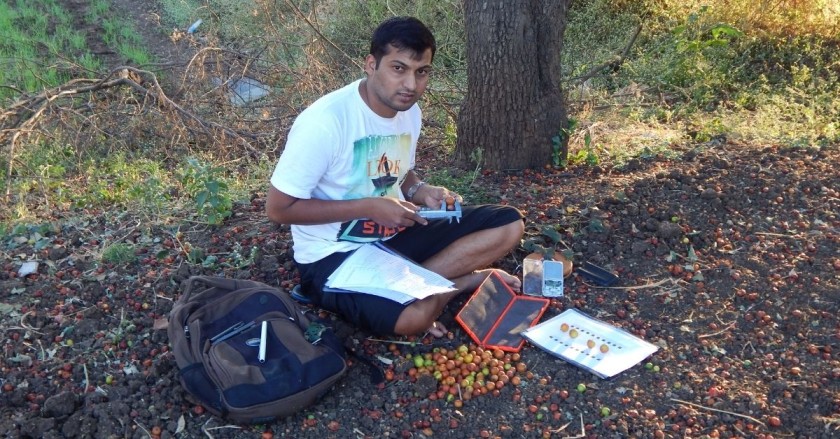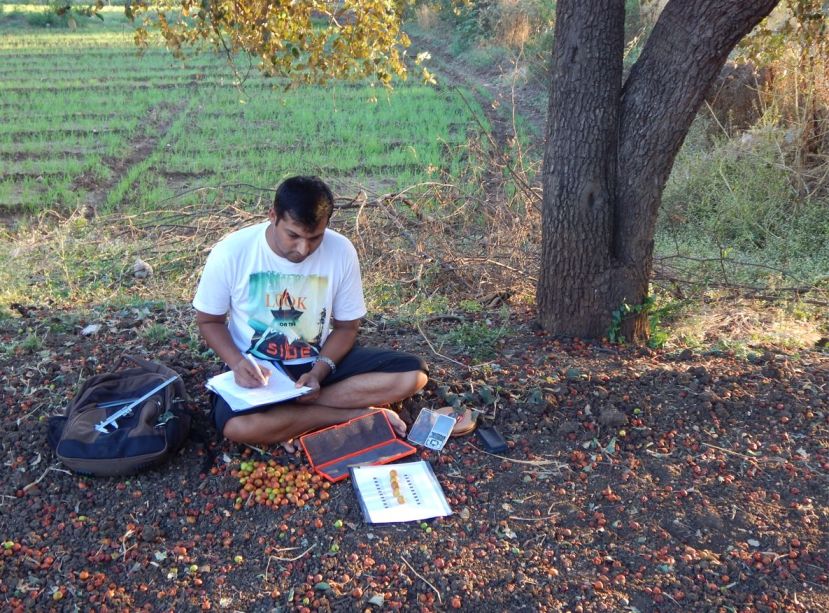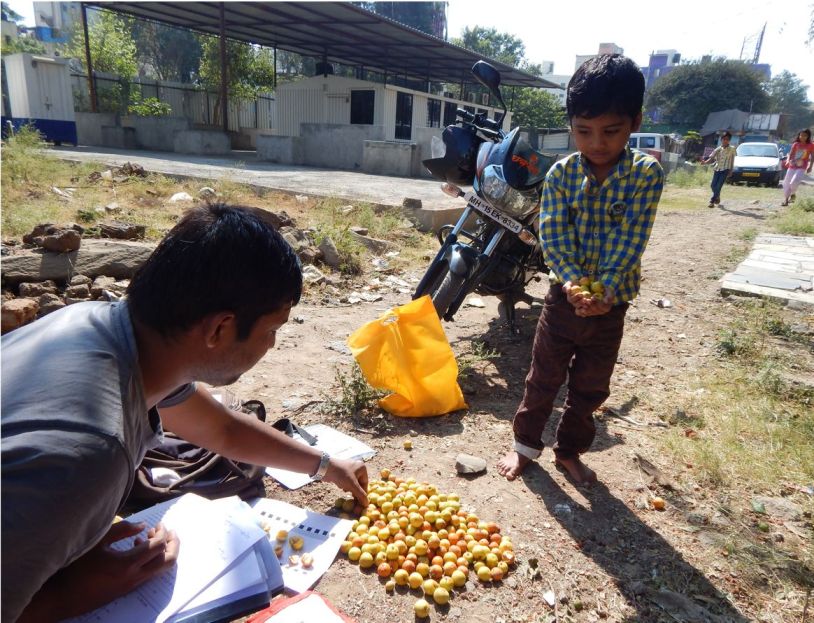Pune’s ‘Bora Man’ is Saving Delicious Wild Berries By Planting Hundreds of Trees/Year
Pune-based Pravin Thete is a strong advocate for wild berries and 'boras' from ber trees in Baner. Over seven years, he has documented 54 varieties of wild berries in the Sahyadri region in terms of colour, taste, benefits and the quantity of fruits the plant yields.

I’ve never met anyone who speaks so passionately about something seemingly inconsequential — the wild berries that Maharashtra’s Sahyadri has to offer. Pravin Thete from Pune vehemently markets the importance of these berries. He believes that the saying should be changed to, “Having boras (jujubes) every day keeps the doctors at bay.”
“Apples are a rather tasteless fruit in comparison to boras, and they don’t have as many vitamins,” Pravin, who has done his MBA in Marketing from Pune University, asserts.
His love for these berries had him document 54 different boras and wild berries by taste, colour and vitamin content.
He tells me these fruits have “four of the six different tastes that our palates can taste. They are sweet, sour, kadwa (bitter), and astringent at times. And yet so many people don’t care for them.”
The 37-year-old’s obsession with these fruits, which are usually eaten straight off the trees and mixed with a bit of spice or salt, stems from the abysmal numbers of ‘ber’ trees left in the village of Baner.
So, for the past six years, he has been fighting to conserve this plant and has planted thousands of ber trees in different parts of Maharashtra and Goa.

“I come from an agricultural background. We used to grow onions, wheat and grapes. I grew up in Nashik and feasted on the local wild berries,” he says.
In 2012, during his MBA days, he started going on various tree plantation drives in his free time and subsequently joined the CEE (Centre for Environment Education) as a field officer. “We would take the kids to the Sahyadri hills and collect different kinds of wild berries like jamun (java plum), imli (tamarind), boras (jujubes), etc. We even collected saplings of these plants to grow elsewhere.”
“What I found on these excursions was that these varieties have adapted very well to nature. They have been here for thousands of years,” he adds.
On his regular tree plantation drives during 2014-15, he spoke to local farmers of the Baner village who told him that the ber trees were depleting in numbers. “There was a time when every farmer in the village had 1,000-2,000 ber trees, which would add up to lakhs of trees. But today, there stands less than 50-100,” he says, adding that the reduction in numbers is because of urbanisation of the villages and increasing farmlands.
“There weren’t many takers of boras in the city,” he says. And so these trees fell by the wayside, quite literally.
The number of remaining ber trees in the village is still less than 1 per cent of the initial figure.

“The farmers would tell me of how they would send truckloads of boras to Mumbai and other cities, but now they’ve lost out on that income,” Pravin says.
That is how he began documenting the different wild berries, their tastes and their benefits. “I have collected the seeds to sow and documented the tastes of 54 varieties of boras. First, I noted down which boras had more sweetness, sourness, and astringent flavour. Then, I studied these plants to notice that boras come before wood apples and amla (Indian gooseberry) in containing the most vitamins.”
He also documented the yield from these 54 varieties to measure the bountiful harvest farmers would receive in planting each of these varieties.
For this reason, he was christened ‘bora man’ among his colleagues at CEE.

Since 2016, Pravin has been diligently planting saplings of boras in different areas of Pune and other parts of the state.
“Hybrid cultivation through grafting was one option but planting the seeds of different varieties ensured the future generations of the particular wild berry thrived. This seemed more sustainable. So I started planting different seeds, and I grew around 600-700 saplings at my house,” he says.
These he distributed among people and friends in the Baner village, Sahtara and Goa.
Before the pandemic, he used to grow at least 500 saplings and distribute them to different people. “I got COVID this year, so I couldn’t collect any new seeds and plant saplings. But I am sure I have grown over 1,500 ber trees over the years,” he adds.
In 2018, he planted 3,000 saplings at a government nursery near the Savitribai Phule Pune University (SPPU). He also mentions his plantation drives of ber trees in the Public Works Department, Government of Maharashtra.
“The major expense while doing these drives is soil and grow bags. I don’t have to dip into my savings as I mostly tie up with government institutions or farms who help me out,” says Pravin, who is currently working with an NGO as a tree conservator.
“I have also planted a few saplings on the banks of Ram river in Pune,” he adds.
Today, those who know of him call him up for a few saplings of different ber trees. “People who know me lovingly call me ‘mauli’ (meaning — mother of everything), but I am also known as the ‘bora man’ because of my work,” he adds.
Pushing to conserve unique wild berries, he urges younger generations to plant, preserve and buy boras.
“People often want consistency in the fruits they eat. They prefer a one-size-fits-all approach when it comes to the taste of mangoes or apples. But the joy and satisfaction of eating a wholesome fruit like wild berries are unlike any other fruit present in the market,” he concludes.

(Edited by Vinayak Hegde)
If you found our stories insightful, informative, or even just enjoyable, we invite you to consider making a voluntary payment to support the work we do at The Better India. Your contribution helps us continue producing quality content that educates, inspires, and drives positive change.
Choose one of the payment options below for your contribution-
By paying for the stories you value, you directly contribute to sustaining our efforts focused on making a difference in the world. Together, let’s ensure that impactful stories continue to be told and shared, enriching lives and communities alike.
Thank you for your support. Here are some frequently asked questions you might find helpful to know why you are contributing?


This story made me
-
97
-
121
-
89
-
167











